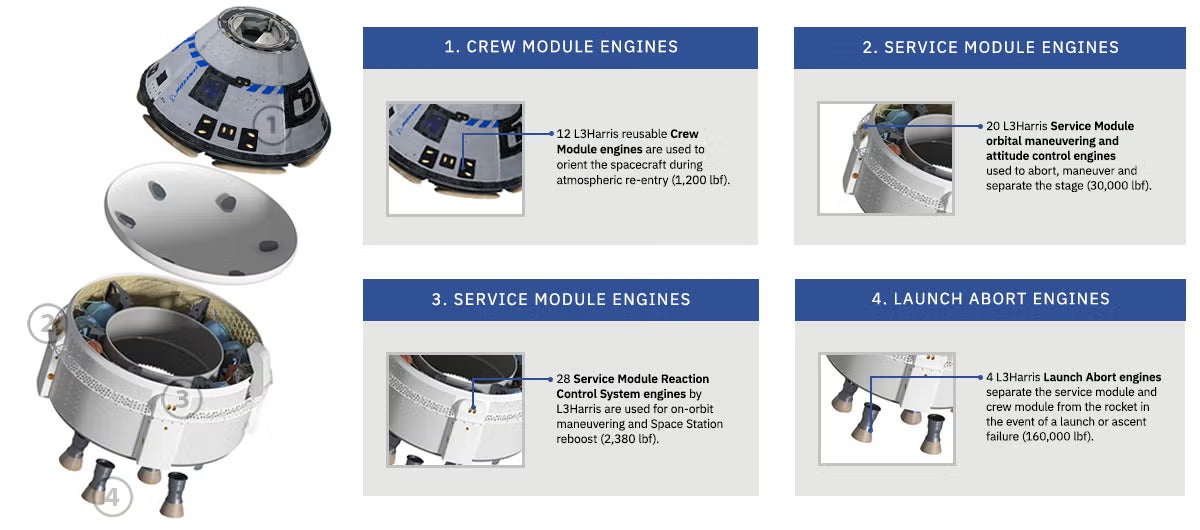Overview


Reusability: The Starliner will land on the ground with the aid of parachutes and airbags rather than in the water, enabling the craft to be used up to 10 times.
Autonomy: The Starliner is designed for autonomous operations, reducing the training necessary for space station-bound astronaut crews.
Service Module Orbital Maneuvering and Attitude Control Engines: Each Starliner service module will be equipped with 20 L3Harris engines that generate 1,500 pounds of thrust each to support orbital maneuvers. They will also provide attitude control in the event of a low-altitude launch abort and provide direct abort capability at high altitudes.
Crew Module Reaction Control Engines: The Starliner crew module will use 12 L3Harris MR-104J thrusters to orient itself during atmospheric re-entry.
Service Module Reaction Control System Engines: L3Harris' Reaction Control System (RCS) engines on the Starliner service module each generate 100 pounds of thrust and will be used for on-orbit maneuvering. They would also provide attitude control in the event of a high-altitude abort. There will be 28 reaction control system engines on each Starliner service module.
Launch Abort Engines: L3Harris is providing the 40,000-pound thrust launch abort engines that will separate the capsule and its service module from the rocket in the event of a launch or ascent failure. Each service module is equipped with four launch abort engines. If the launch goes smoothly, the propellant will be used to support mission operations.
L3Harris is also equipping each Starliner with 160 valves, 18 tanks and more than 500 feet of ducts, lines and tubing.